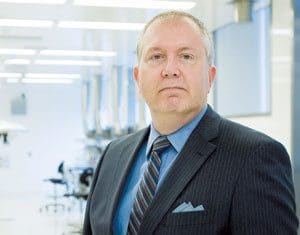
Innovation, change, and forensics.

Send a simple request. You’ll get a quick reply with fees and availability
About Max
Keynote
Video
Speaker Max Houck has worked as a forensic anthropologist, a trace evidence analyst, a researcher, and he has managed millions of dollars in grants and awards. Houck was the inaugural Director of the Department of Forensic Sciences in Washington, D.C., overseeing 150 employees, managing the forensic science laboratory, the public health laboratory, and crime scene sciences for the nation’s capital. He has worked on many mass casualty scenes, including the September 11, 2001 attack on the Pentagon.
Max has also worked extensively with the Innocence Project on investigations into wrongful convictions, including the West Memphis Three. Widely published, Houck is the author and editor of numerous books. He is a popular public speaker and has given presentations at NASA, the Max Planck Institute, an Oxford Roundtable, the Dali Museum, and keynote talks at numerous international conferences. His research topics include management, leadership, and policy implications for forensic organizations. Houck has a Bachelors’ and Master’s degree in anthropology from Michigan State University. He received his Ph.D. in Applied Chemistry Summa Cum Laude from Curtin University in Perth.
See keynotes with Max HouckForensic science is more than a collection of methods applied to criminal investigations. Forensic science is the study of the relationship between people, places, and things involved in past criminal activity and it aims to reconstruct those events. With a philosophy and mindset unique to the discipline, forensic science nevertheless shares many of its fundamental principles with other historical sciences, like geology and archaeology.
Audience takeaways:
All frauds, cons, and scams have basically the same internal structure: The hook, the line, and the sinker. The variety of frauds and the creativity of fraudsters obscures this framework but, once understood, frauds are easier to spot and to appreciate. The painting The Conjurer by Hieronymus Bosch (c. 1502) contains in it all the elements of fraud and in this presentation provides a literal canvas for a discussion of what is a fraud, how it works, and how to avoid it.
Audience takeaways:
Crime scenes are an exercise in recognition, recording, and recovery. While we think of crime scenes as being photographed, the painting The Death of Marat (Jacques-Louis David, 1793) offers a different medium to explore how a crime scene is processed and documented. While the painting is a work of historical fiction, it nevertheless contains detailed aspects of evidence recognizable to the modern forensic eye. The painting is deconstructed in a historical context and as documentation of a crime scene.
Audience takeaways:
A brief interactive introduction to the fundamentals of ethics and ethical thinking with hypothetical and real-world examples. Ethical thinking is a significant part of our day but we rarely consider how and why we make the decisions we do, let alone if they are “right” or “wrong.” Should we tell a killer who’s looking for our friend that he’s upstairs? Isn’t doing the most good for the most people the best way to live? And, most important, why doesn’t Batman kill the Joker? A lively, insightful discussion of ethical thinking tuned to the practicalities of daily life and its implications for our justice system.
Audience takeaways:
Cognitive biases are like visual illusions of thinking: It takes effort to see past them and have clarity. Biases exist for a good reason–they have saved our lives many times without us knowing–but they can be a hindrance in the modern world. Recognizing them is not enough, however, and it takes effort to work past them to gain a better, more accurate viewpoint.
Audience takeaways:
Send a simple request. You’ll get a quick reply with fees and availability